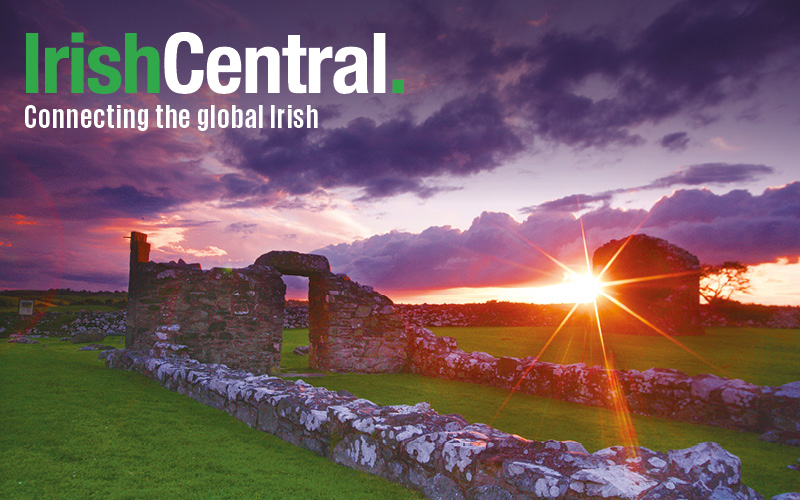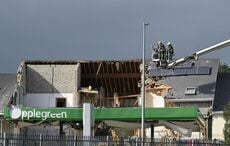As Ireland's heatwave closes out its second week, wildfires are raging in six counties and Irish Water has implemented a hose ban as the water levels have reached 'absolute drought' status.
Drought? Wildfires? Heatwave? How is this Ireland!
Today, July 5, much of Ireland officially entered "absolute drought" status, with no significant rainfall in 14 days, and none forecasted for the next 10 days.
Read More: Heatwave continues as Ireland faces the hottest day in 40 years
location of the gorse fire in Rocky Valley Cresent , Kilmacanogue, County Wicklow, which the fires servives spent most of the day battling to prevent spreading to nearby houses and a school. Photo: Eamonn Farrell/RollingNews.ie
In response, Irish Water has expanded its ban on water hoses from the Greater Dublin area to the entire country, effective immediately on the morning of July 6 until July 31.
This is bananas - River Feale in Listowel is almost totally dry on one side of the bridge #heatwave pic.twitter.com/85H2FyLDw2
— Rhona Tarrant (@RhonaTarrant) July 5, 2018
The hosepipe ban means that people will not be allowed to use hoses to water their gardens, fill a paddling pool, or wash their car. Irish Water is encouraging people to report anyone who does not comply; they will be subject to a 125 Euro ($146) fine.
Irish Water have been in touch with Cllrs to inform of the hosepipe ban now in place. Here are the details. pic.twitter.com/7e2gkr8LfJ
— Dermot Looney (@dlooney) June 29, 2018
According to the Irish Times, "On average, demand across all water resources nationally has increased by 15 per cent, a level Irish Water said 'cannot be sustained for any period of time.'"
Read more: Ireland had a three-month heatwave in 1976 and the videos are AMAZING
Satelite imagery of Ireland comparing June 24 to today showed the toll the drought has taken on Ireland's verdant landscape.
Compare the Satellite Images from the 24th of June to today's, Ireland is looking a lot less green from the dry spell and #Heatwave pic.twitter.com/0GSylvnuh4
— Carlow Weather (@CarlowWeather) July 3, 2018
Ireland’s heatwave is set to continue, with no foreseeable end in sight. Next Thursday, July 12, will see record breaking temperatures hit 91.4F. These temperatures are predicted for Limerick and Carlow with the rest of the country experiencing at least 77F.
#Wildfires burning around Dundalk, #Ireland yesterday, seen from the air. These drought conditions make fire a terrible risk for #wildlife, #biodiversity, and property. pic.twitter.com/X6mk4fUytY
— InvasiveAliens (@InvasiveAliens) July 4, 2018
These weather conditions do not bode well for the many wildfires that have broken out across Ireland.
The Irish Air Corps reported that they are fighting fires in six counties and that helicopters have dropped around 300,000 liters (80,000 gallons) of water in Dublin, Wicklow, Limerick, Cork, Tipperary and Offaly.
Read More: Ireland bracing for hottest day in recorded history
Some of the hardest-hit areas include the Dublin Mountains, the Slieve Bloom mountains in Offaly, and Kildalkey in Mayo.
ICYMI: This is the moment a @TV3Ireland cameraman came to the rescue of a family who got into difficulty after a suspected heather fire broke out in the Dublin Mountains. Emergency services have been dealing with gorse fires nationwide. @fergalobrientv3 reports #Heatwave pic.twitter.com/yIovjtv3UR
— 3News (@3NewsIreland) June 27, 2018
In addition, the Dublin Fire Brigade has also been battling a number of fires - believed to have been lit intentionally and maliciously - in Dublin's Bushy Park.
Fire fighters are battling a major fire on the Slieve Bloom Mountains | https://t.co/Sw4oF5Vi5l pic.twitter.com/M6eIVji5k9
— RTÉ News (@rtenews) July 5, 2018





Comments